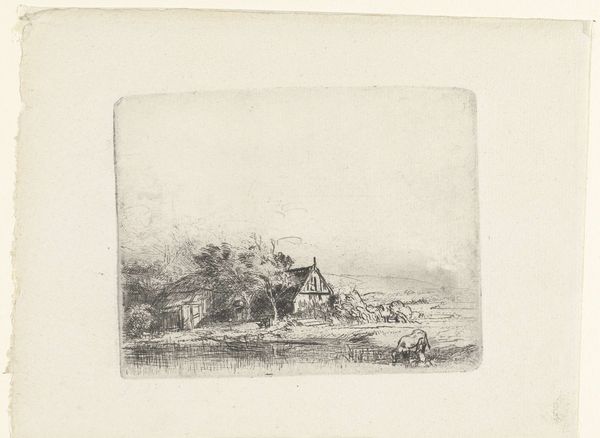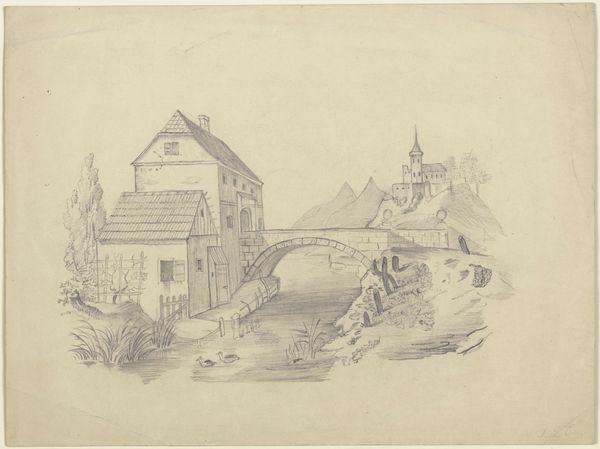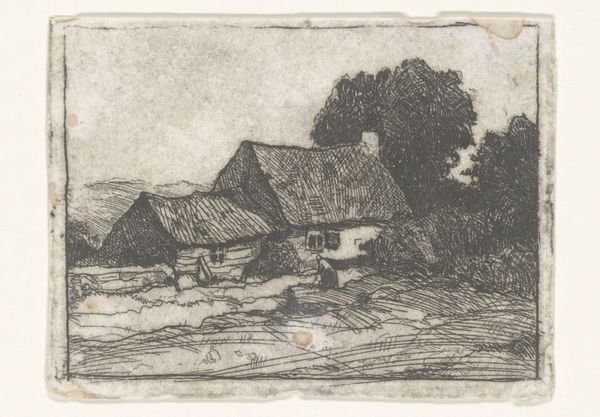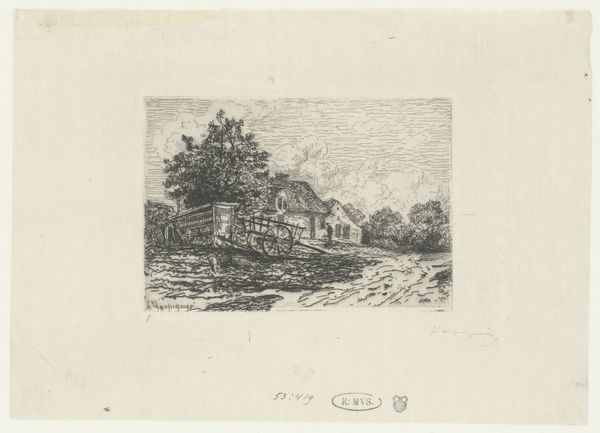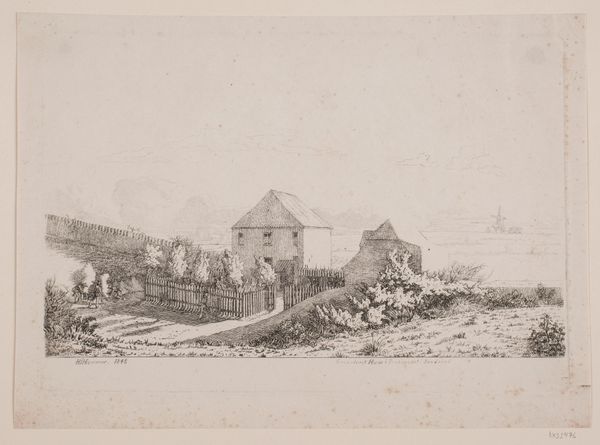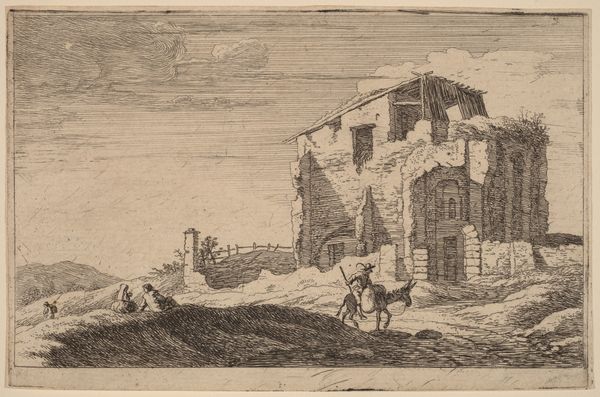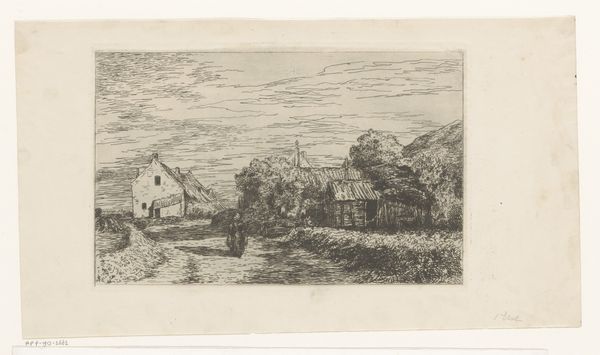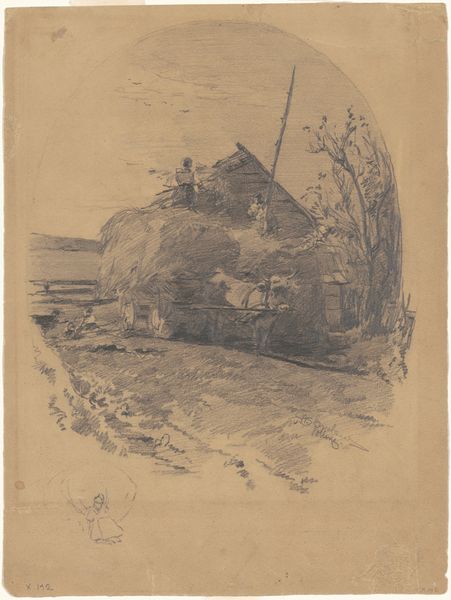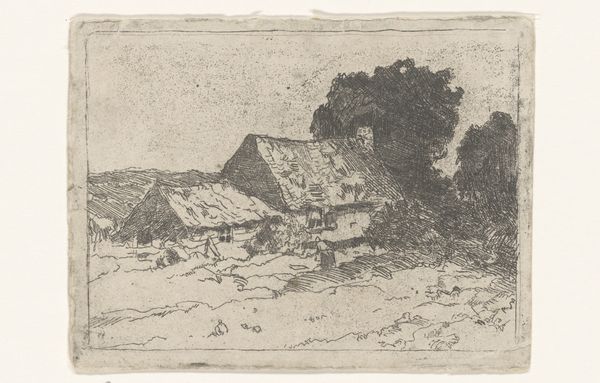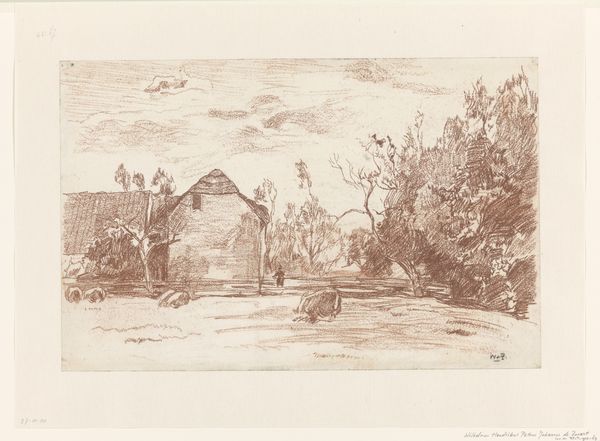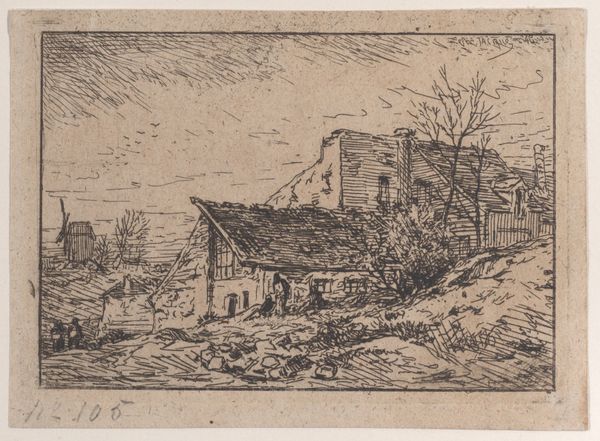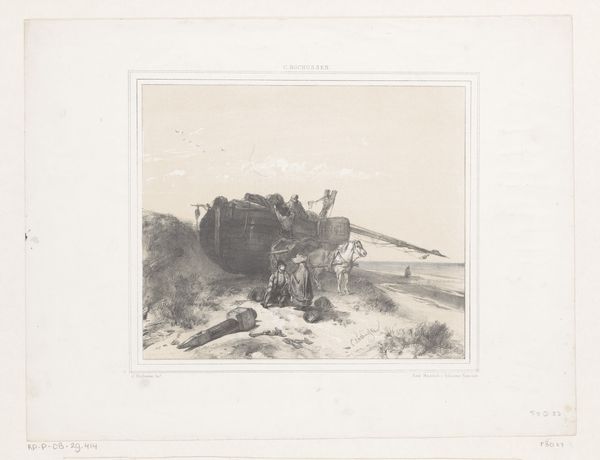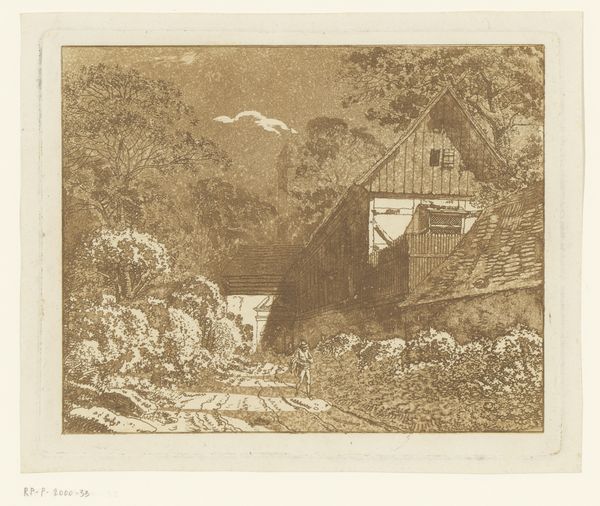
Woman drawing water from a well beneath an arcade at left, with a landscape at right 1717 - 1768
0:00
0:00
drawing, print, etching
#
drawing
#
venetian-painting
#
baroque
# print
#
pen sketch
#
etching
#
landscape
#
etching
Dimensions: Plate: 5 5/16 × 8 1/4 in. (13.5 × 21 cm) Sheet: 7 3/8 × 9 1/8 in. (18.7 × 23.2 cm)
Copyright: Public Domain
Editor: So this is Canaletto's "Woman drawing water from a well beneath an arcade at left, with a landscape at right," made sometime between 1717 and 1768. It's an etching, a print. It's fascinating how much detail he gets with just lines. What do you see in this piece? Curator: It’s a potent view into the intersection of public and private life in 18th-century Venice. Consider how Canaletto, known for his views of grand canals, chooses to depict a mundane, almost hidden scene. Why highlight a woman drawing water instead of Doge's Palace? It subtly comments on the undercurrents of daily existence that supported the Venetian spectacle. Editor: That's interesting. So it's not just a pretty picture, but a commentary on social structures? Curator: Exactly. Think about who would have commissioned or purchased such a print. Was it intended for Venetians or for tourists? How does the choice of subject matter – the working class, the well as a communal space – reflect the evolving role of art in shaping perceptions of Venice itself? And look closely: are we seeing idealized poverty or is there a hint of something else, something that challenges romantic notions? Editor: I see what you mean. It definitely feels more grounded than some of the more glamorous Venetian scenes. It makes you think about the real people behind the facade. Curator: Precisely! And the setting, with the arcade hinting at grand architecture juxtaposed against the woman's labor, underscores the complexities and contradictions of Venetian society at the time. Canaletto provides us with a complex reflection. Editor: I had not considered it as political. It definitely adds a new layer to my interpretation. Curator: The politics of imagery are often hidden in plain sight. Appreciating art through a historical lens often reveals surprising insights.
Comments
No comments
Be the first to comment and join the conversation on the ultimate creative platform.
